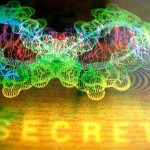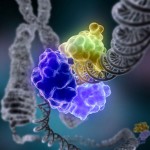 On March 20, 2012, the U.S. Supreme Court handed down its decision in Mayo Collaborative Services v. Prometheus Laboratories, Inc., 132 S. Ct. 1289 (2012). A year ago, when the Court decided to hear the case, I wrote about it in this blog. Now – a little belatedly – I am discussing the Court’s decision, as it has given the biotech industry reason to be concerned about its scope.
On March 20, 2012, the U.S. Supreme Court handed down its decision in Mayo Collaborative Services v. Prometheus Laboratories, Inc., 132 S. Ct. 1289 (2012). A year ago, when the Court decided to hear the case, I wrote about it in this blog. Now – a little belatedly – I am discussing the Court’s decision, as it has given the biotech industry reason to be concerned about its scope.
Prometheus was the sole and exclusive licensee of certain patents on methods for determining the optimal dosage of thiopurine drugs used to treat autoimmune diseases. When Prometheus sued Mayo for patent infringement, Mayo argued that the patents in question were invalid because they claimed subject matter unpatentable under the Patent Act, 35 U.S.C. § 101. Specifically, Mayo argued that the patents impermissibly claimed natural phenomena – i.e. the correlations between drug metabolite levels and efficacy and toxicity – and not patentable inventions. The district court had agreed with Mayo, but the Federal Circuit Court of Appeals reversed and held the patents valid. In a unanimous opinion written by Justice Breyer, the Supreme Court reversed the Federal Circuit, stating that the Prometheus patents were invalid under § 101 because the process incorporates the unpatentable laws of nature and “well-understood, routine, conventional activity previously engaged in by researchers in the field.” (p. 1294) The Court stated:
“If a law of nature is not patentable, then neither is a process reciting a law of nature, unless that process has additional features that provide practical assurance that the process is more than a drafting effort designed to monopolize the law of nature itself.” (p. 1297)
The Court determined that the patent in question in this case did not have such “additional features.” The Court was especially concerned that future innovation could be stifled by allowing patents on certain uses of the laws of nature. The Court said that the measurement processes at issue in this case stated such a broad use of conventional procedures that they could be read to monopolize the field, making them unpatentable subject matter. The Court stated:
“We need not, and do not, now decide whether were the steps at issue here less conventional, these features of the claims would prove sufficient to invalidate them. For here, as we have said, the steps add nothing of significance to the natural laws themselves. . . .The presence here of the basic underlying concern that these patents tie up too much future use of laws of nature simply reinforces our conclusion that the processes described in the patents are not patent eligible . . . .” (p. 1302)
Not surprisingly, the decision has raised red flags in the biotech industry, particularly in the areas of medical diagnostics and personalized medical treatments. In an article in the most recent issue of the ABA Journal, author Steven Seidenberg examined the impact that the Mayo decision is likely to have on such innovation. The experts consulted for the article all had concerns about the breadth of the decision and the chilling effect it might have on future innovation. See Steven Seidenberg, New Laws of Nature Law: Ruling Questions Scientific Patents,ABA Journal (Jul. 2012), at 20-21.
There are some issues that may need resolution going forward:
● When a procedure is “less conventional” than the procedure at issue in Mayo, will it be patentable? Or must it be “unconventional” to be patentable?
● What exactly is a “conventional procedure”?
● To what degree does the case represent a broadening of the “laws of nature” exception to §101?Those in the biotech industry will need to mull over this decision as new innovations are developed.
Those in the biotech industry will need to mull over this decision as new innovations are developed.
The Supreme Court’s decision is available at
www.supremecourt.gov/opinions/11pdf/10-1150.pdf
The ABA Journal article is available at
www.abajournal.com/magazine/article/new_laws_of_nature_law_ruling_questions_scientific_patents/



